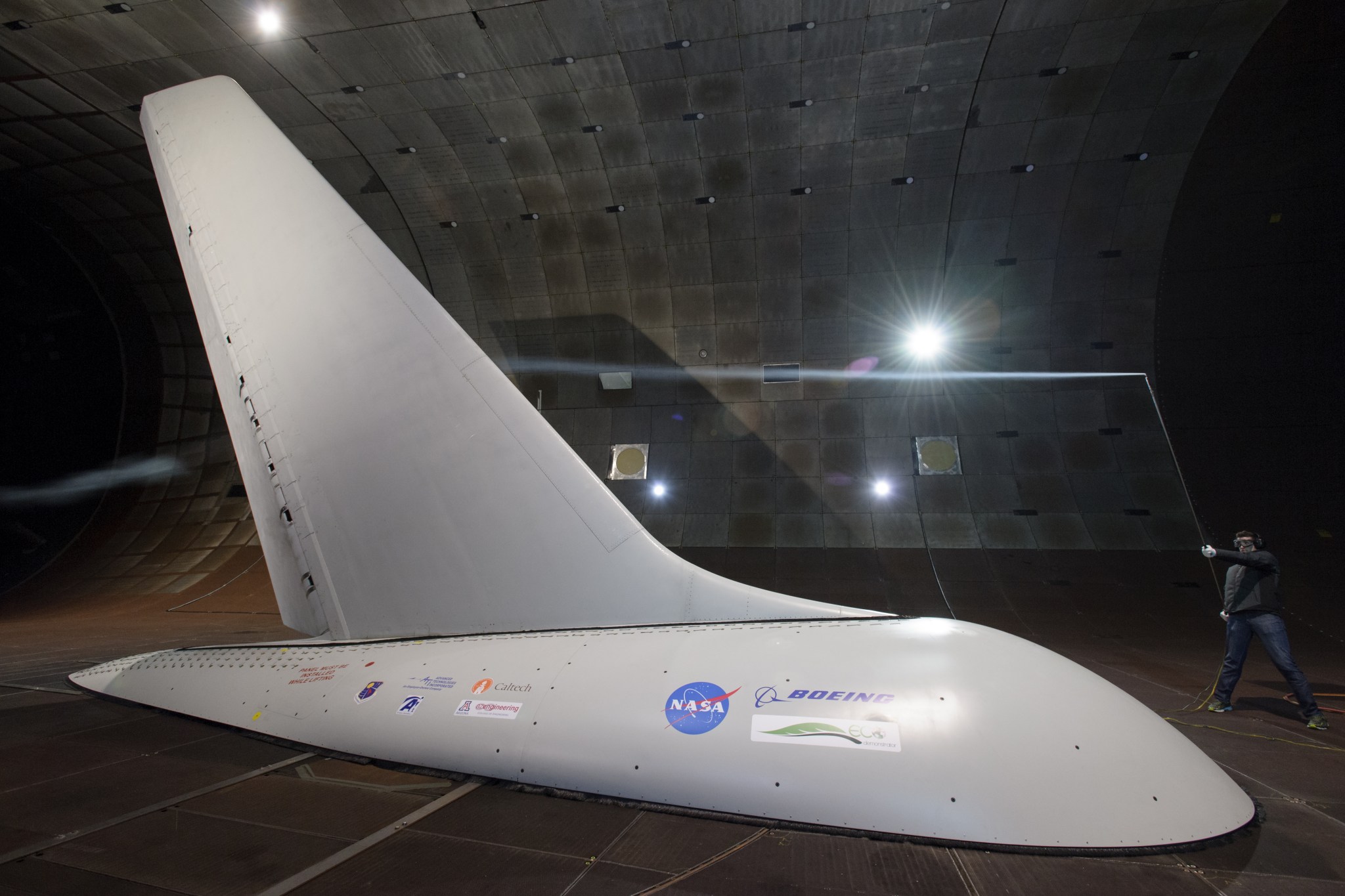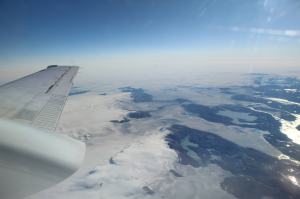Two NASA experiments designed to help reduce fuel consumption and emissions will fly this spring on a specially outfitted Boeing 757 airplane called the ecoDemonstrator.
One includes 31 small devices that will blow jets of air on the vertical tail and the other involves non-stick coatings to help repel bugs from the leading edge of wings.
“Both are designed to improve the air flow over the surface and ultimately reduce drag,” said Fay Collier, manager for the NASA Aeronautics Research Mission Directorate’s Environmentally Responsible Aviation (ERA) Project. “Increased drag means increased fuel consumption, which results in more pollutants in the atmosphere. The goal of our project is to develop aircraft concepts and technologies to reduce the impact of aviation on the environment over the next 30 years.”
The first technology to be tested is called the Active Flow Control Enhanced Vertical Tail Flight Experiment. NASA worked with Boeing to install 31 tiny jets called sweeping jet actuators that can manipulate, on demand, the air that flows over the ecoDemonstrator 757’s vertical tail and rudder surfaces. An aircraft’s vertical tail is primarily used to add stability and directional control during takeoff and landing, especially in the event of an engine failure. But when the aircraft is cruising at altitude the same large, heavy tail is not necessary.
Engineers theorized they could reduce the size of the vertical tail by using the sweeping jets to generate the same side force during takeoff and landing that a larger tail does. That would reduce the weight and drag of the airplane and decrease its fuel consumption.
Instruments on board the ecoDemonstrator 757 flight test airplane will measure the performance of the active flow control enhanced vertical tail in nine flights planned around Seattle, Washington. During those tests, the plane will fly various maneuvers to evaluate the increase in vertical tail and rudder side force caused by the jets. The maneuvers will include simulated engine failures and variations in jet arrangements and flow rates.
Ground studies by a team of NASA, Boeing, University of Arizona, and Caltech researchers on a full-scale 757 vertical tail in a wind tunnel at NASA’s Ames Research Center at Moffett Field, California, showed the active flow control jets could increase side force by 20 to 30 percent. Researchers expect the flight tests to confirm those results. A 20 percent increase in side force could allow designers to scale-down the vertical tail by about 17 percent and reduce fuel usage by as much as one-half percent.
In another set of flight tests a few weeks later near Shreveport, Louisiana, NASA’s ERA project will assess how well five different coatings repel insect residue in an experiment called Insect Accretion and Mitigation. Bug remains may be a nuisance on cars, but on some airplane designs they are also a drag, quite literally. Studies have shown that keeping the flow smooth, called laminar, over a wing can reduce fuel consumption as much as six percent. Even something as small as a bug on a leading edge can cause turbulent wedges that interrupt laminar flow. That results in an increase in drag and fuel consumption.
Engineers at NASA’s Langley Research Center in Hampton, Virginia, developed and tested a number of non-stick coatings in a small wind tunnel and on the wing of a NASA Langley jet. They selected the best candidates to test on the right wing of the ecoDemonstrator, while a NASA, Boeing, Department of Transportation (Volpe), and University of California-Davis team looked for the best bug-infested area in which to flight test the surfaces. After narrowing the list of 90 airports to six, Shreveport was chosen based on runway length, temperature, humidity, weather, the ability to handle a 757 aircraft and thunderstorm frequency.
During 15 planned flights researchers will install sections of coatings onto the leading edge slats of the ecoDemonstrator 757. First they will establish a baseline using uncoated surfaces, to capture insect accumulation rates. Then they will remove those sections and install samples of the five treated panels. One of the things engineers want to test is how durable the coatings are. Treated surfaces will only be effective as drag reducers if they can withstand the harsh flying environment.
“Solutions to reduce fuel use by one or two percent may not sound like much,” said Collier. “But shaving aircraft fuel consumption even a few percentage points can save millions of dollars and help protect the environment from harmful emissions.”
The two experiments on board the ecoDemonstrator 757 are part of eight, large-scale ERA integrated technology demonstrations being conducted in 2015 that will bring NASA’s ERA project to a close. The demonstrations were designed to further the project’s goals of simultaneous reduction in the amount of fuel used, the level of noise and the emissions produced by future commercial transport planes.
The eight demonstrations are focused on aircraft drag reduction through innovative flow control concepts; weight reduction from advanced composite materials; fuel and noise reduction from advanced engines; emissions reductions from improved engine combustors; and fuel consumption and community noise reduction through innovative airframe and engine integration designs.
With the exception of Boeing proprietary technology, NASA knowledge gained in collaboration with Boeing from ecoDemonstrator research will be publicly available to benefit industry.




































